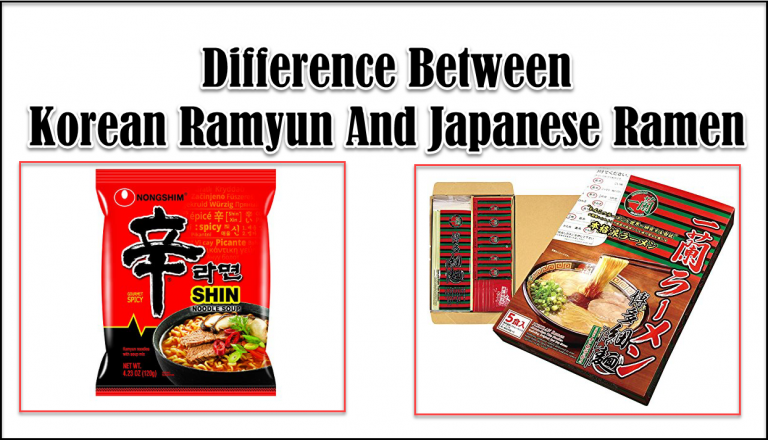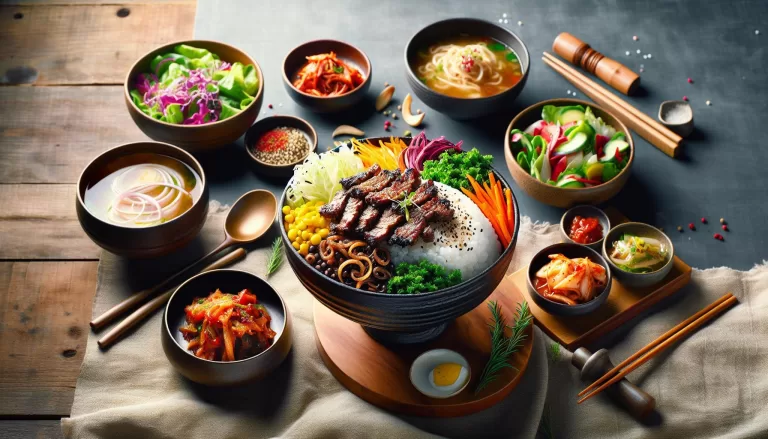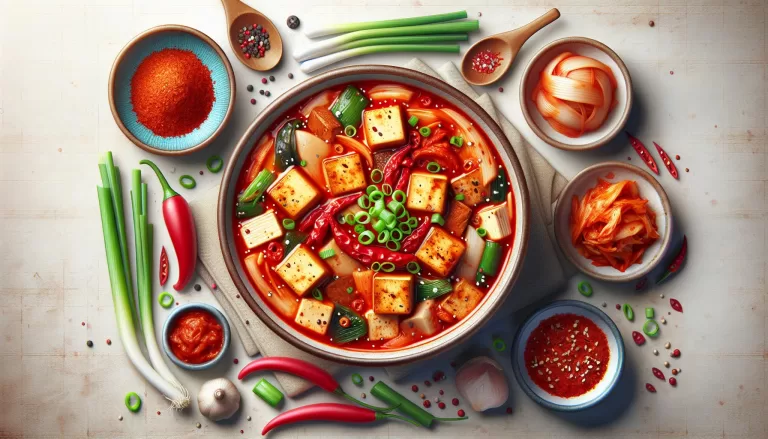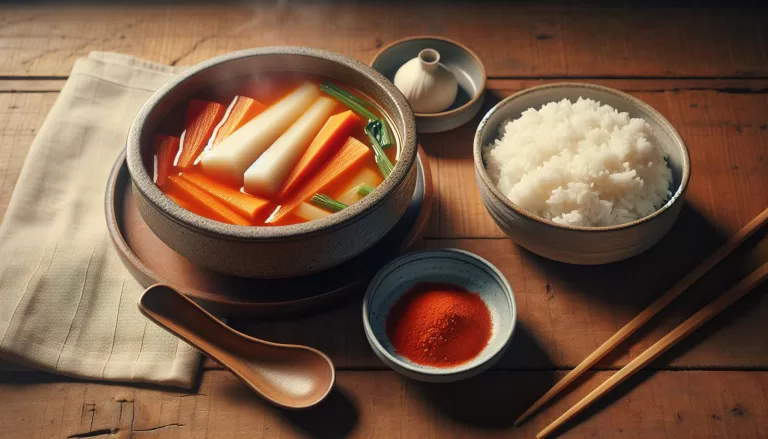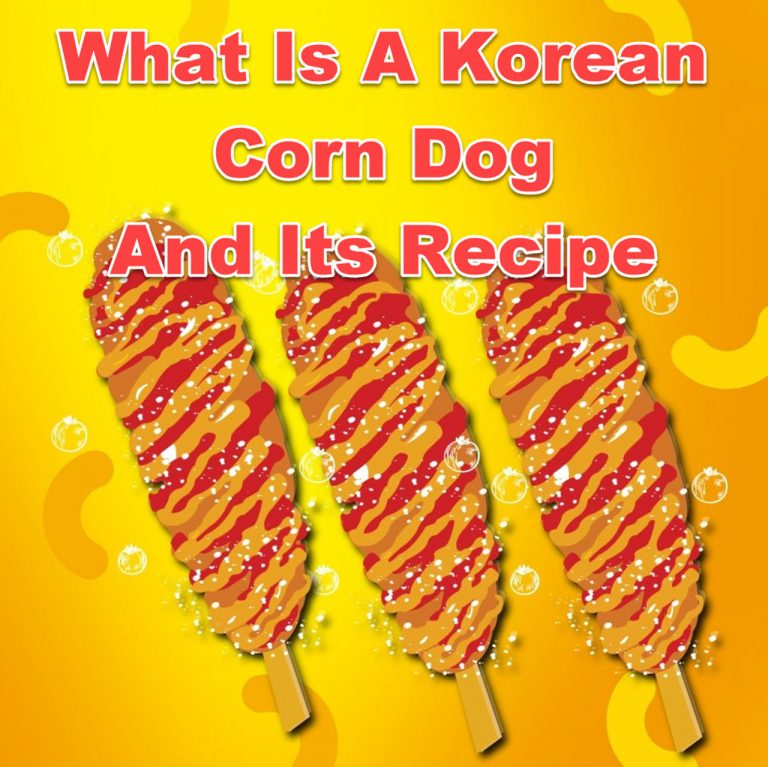10 Different Types Of Kimchi With Images
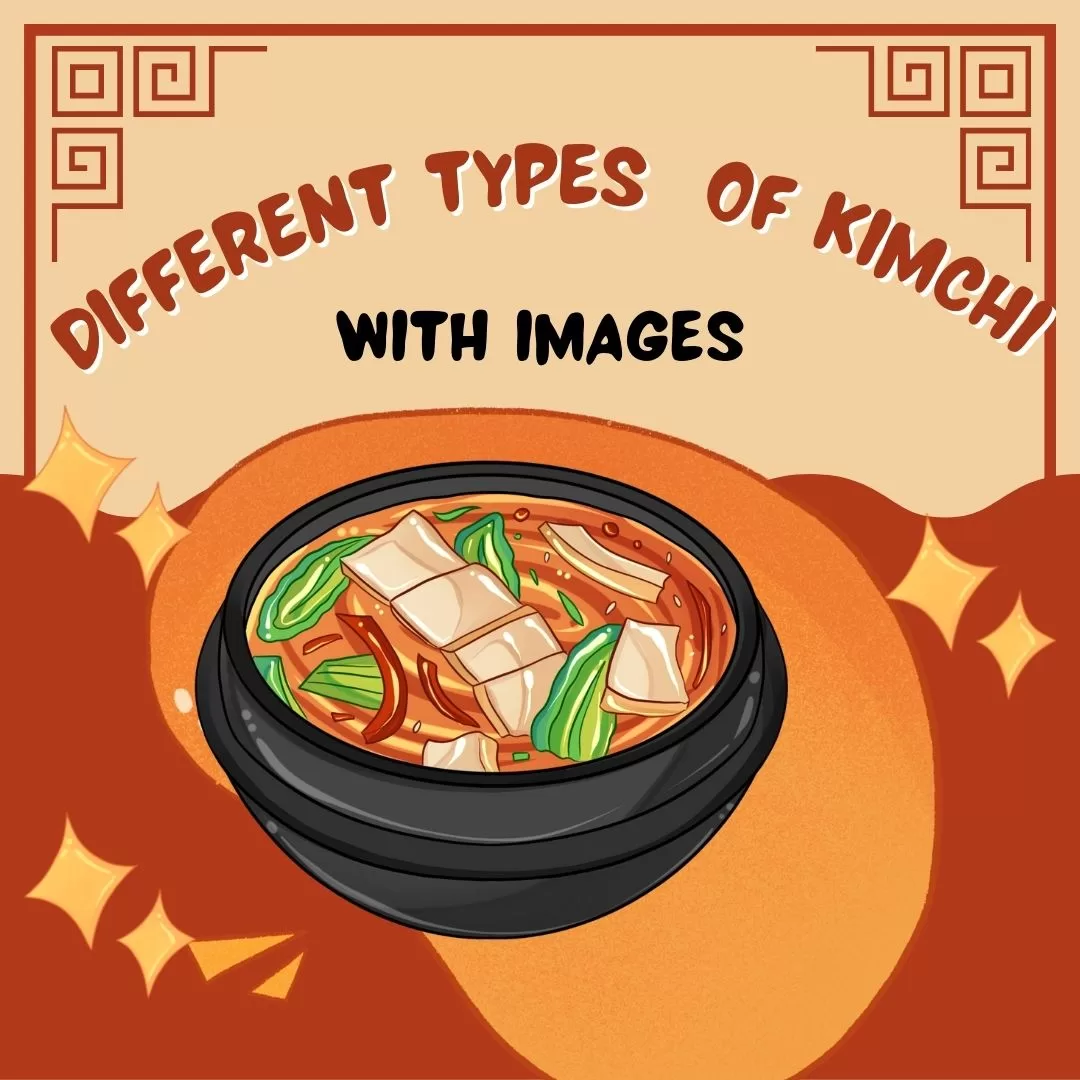
Kimchi is one of the Korean’s famous dish on most Korean Cuisine. Almost every Korean meal in Korean restaurants have Kimchi on their menu. As a matter of fact, a visit to a Korean Restaurant will not be complete without Kimchi either as the main dish but most of the time Kimchi is prepared as a side dish to other Korean food. Nowadays, Kimchi dish is gaining its popularity not only in Korea but you can find Kimchi in other countries as well. Not only does Kimchi provide health benefits because of the main ingredient used, but it is also delicious as well. There are however many varieties of Kimchi but in this post let us just go through some of the most popular types of Kimchi.
What is Kimchi?
Kimchi dish is a traditional red and spicy Korean dish (must-have side dish) made from salted and fermented vegetables. Main ingredients are Napa cabbage and Korean Radish. Most of the time, Kimchi is used as a side dish to main dish such as Kimchi Pancakes, Kimchi Jjigae or Kimchi Fried rice.
The process of making Kimchi is pretty simple and easy. It involves seasoning the cabbage, the radish then fermenting that vegetables until it will soften and will absorb its flavor.
Different Types Of Kimchi
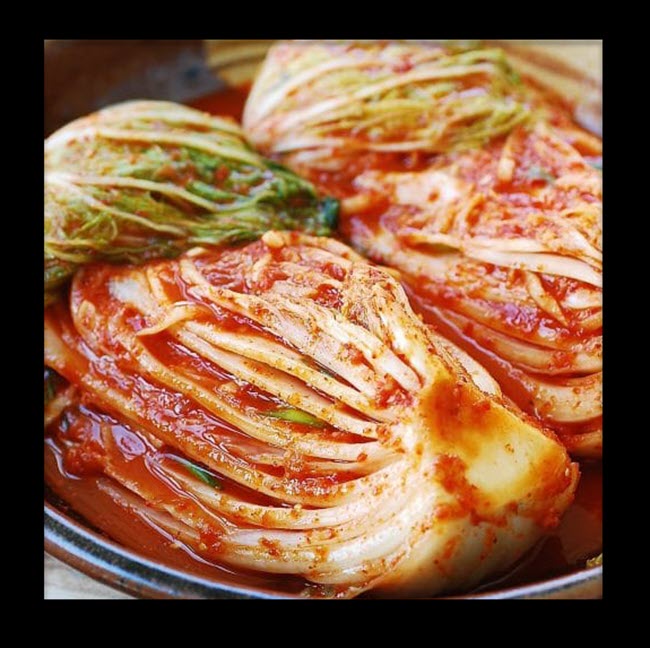
Baechu Kimchi (White kimchi)
Baechu Kimchi (White Kimchi) or also known as Napa cabbage kimchi is the most popular type of Kimchi amongst all the other types. That is why when you talk about Kimchi, it always refers to Beachu Kimchi. Also, this type of Kimchi is used as the main ingredient in another delicious Korean dish which is the Kimchi Hot Pot. These type of Kimchi can either be spicy or hot but a bit dry.
baechu Kimchi is usually made using salted leaves of the cabbage then added with other seasoning. Finished Kimchi product are then stored in an airtight container.
Although the taste of Napa cabbage may vary depending on the region it is derived from. Say for example in the Southern region, Napa Cabbage are mixed with a seafood broth that is salty the a glutinous rice is usually spread on the entire Napa cabbage, while in Northern regions napa cabbage are mixed with finely chopped radish that are seasoned with spices.
Baechu Kimchi is made with napa cabbage that is evenly salted then added with spring onions, fish sauce and hot red pepper flakes.
There are those who prefer to eat freshly made Beachu Kimchi, while others love to wait for a longer fermentation process for that sour taste that they can get.
Eat Kimchi with Kimchi-Jjigae which is a Kimchi Stew or Kimchi Bokkeumbap or Kimchi Fried Rice.
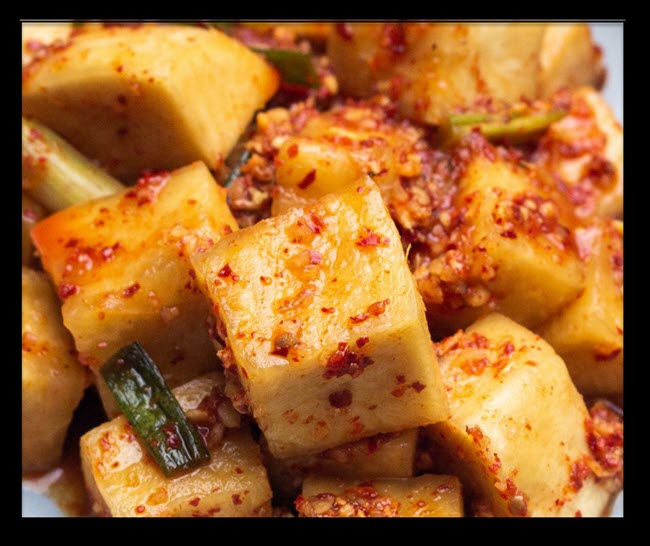
Kkakdugi (Cubed Radish Kimchi)
Another type of Kimchi dish is Kkakdugi. It is also known as Cubed Radish Kimchi. Therefore as the name itself presents, it is made with radish. Radish used in making Kkakdugi kimchi are the white large round kind of radish with green on its end or tip. It is mostly found in Asian supermarkets.
The preparation process of making Kimchi Kkakdugi is similar to that of Beachu Kimchi wherein ingredients such as chopped garlic, salted shrimp (fermented) and chili pepper. Though Kkakdugi is more juice and is a crunchy kimchi.
Kkakdugi Kimchi goes well with any dish but it is usually paired with Seolleongtang (Korean Beef bone soup, Galbitang (Beef short rib soup) and Kalguksu (Korean sliced noodles).
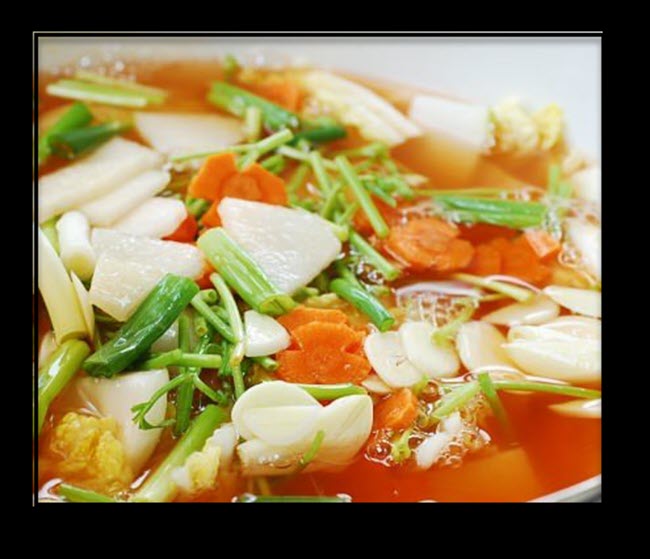
Nabak Kimchi (Watery Kimchi)
Nabak Kimchi is also called Water or Nul Kimchi. It is made by cutting radish into small thin squares, carrots thinly sliced, chopped green onions and and salted Napa cabbage. These vegetables are then soaked into a seasoned water. The brine is made using garlic, onions, ginger, pear (Korean) and hot pepper flakes.
Nabak Kimchi is less spicy as compared to the other varieties, and it is available all throughout the year. It goes well with other foods such as Tteokguk, a type of rice cake soup that is traditionally eaten during Seollal ( Korean New Year).
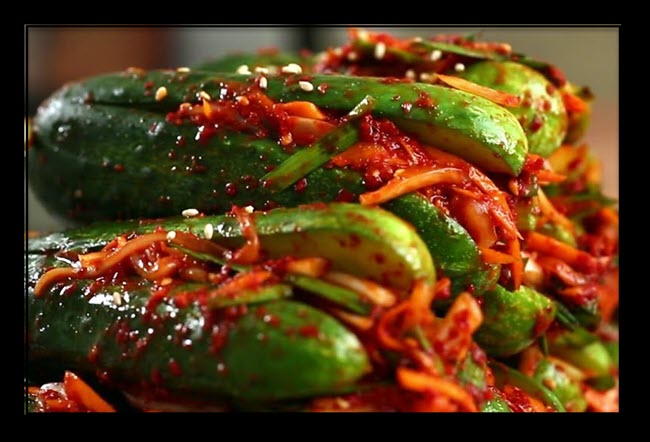
Oi Sobagi (Cucumber Kimchi)
If you love cucumbers, then you should try this other types of Kimchi which is the Oi Sobagi. It is also called Cucumber Kimchi or Stuffed Cucumber Kimchi. “Oi” means Cucumber in Korean while Sobagi means Stuffed Cucumber, hence Oi Sobagi.
This is another popular type of Kimchi that is refreshingly crisp with a hint of spiciness similar to other Kimchi variations. It is usually available in Spring time and Summer time.
In making Oi Sobagi, the Korean cucumbers are usually split into lengthwise wherein the other end is cut while the other end is uncut. The cucumber is then stuffed with other vegetables such as carrots, onion and sometimes chopped chives are also added. The stuffed cucumber is then seasoned with minced garlic, scallions and red pepper powder.
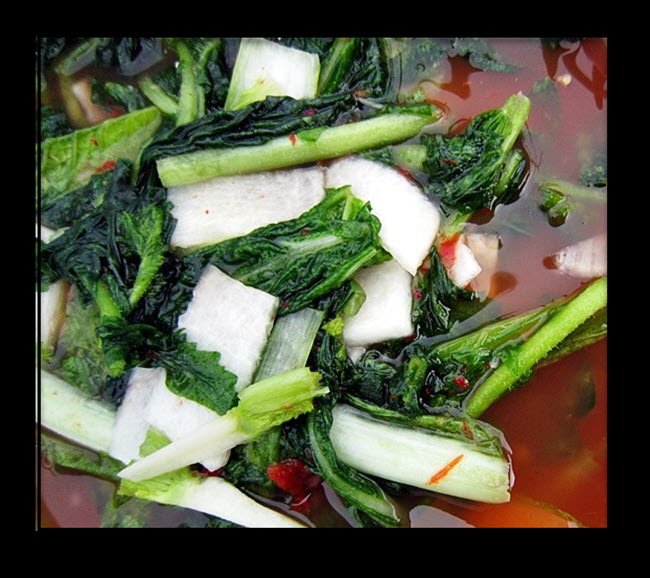
Yeolmu Kimchi (Young Summer Radish Kimchi)
Another types of Kimchi is the Yeolmu kimchi, wherein Yeolmu refers to young summer radish plants (roots are still attached). In comparing young radish greens from mature radish greens, both are completely different wherein young radish greens are softer and tender while mature radish greens are more chewy and tends to be tough.
Yeolmu Kimchi is made using fish sauce, red chili peppers and salt. The seasoning used is similar to that of Beachu Kimchi thought it is more spicy. It is usually available during summertime and spring.
It is usually eaten in combination with Bibimbap which made of rice that is mixed with vegetables and also paired with Bibim-guksu or Korean spicy cold noodles.
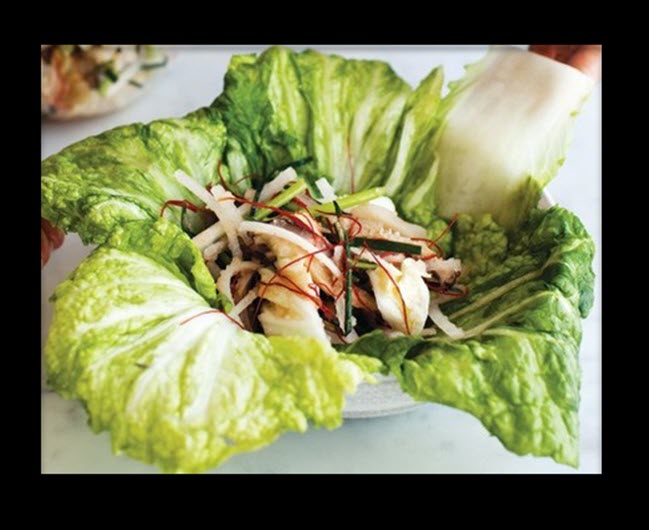
Bossam Kimchi (Wrapped Kimchi)
Bossam is a widely dish that is made by using large napa cabbage. The boiled pork is wrapped using the napa cabbage. While Bossam Kimchi on the other hand is a traditional Kimchi that originates in Gaesong, a region located in Korea.
It is one of the popular types of kimchi since the preparation process is relatively easy and simple. Also, Bossam Kimchi is served as a roll, which makes it unique from the rest of kimchi varieties.
Bossam Kimchi is made wherein ingredients such as seafood, radish, vegetables are seasoned and then wrapped in Napa cabbage leaf. Making sure that it is large enough to accommodate the ingredients inside.
After wrapping the ingredients, it is then preserved and brewed.
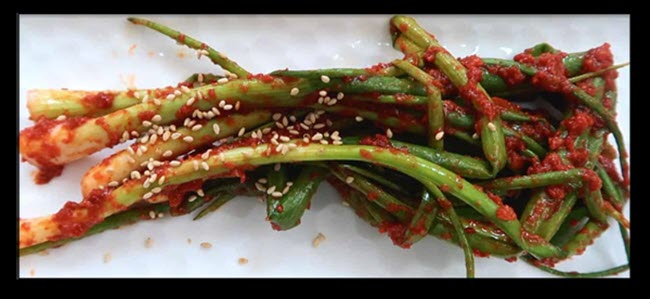
Pa Kimchi (Green Onion Kimchi)
Another types of Kimchi variety is the Pa Kimchi. It is made from scallions or “Pa” which stands for as green onions in Korean. Because the white parts of young scallions are relatively sweet, they are often used to make this kind of Kimchi Variety.
Pa Kimchi is commonly eaten during spring season, the time when green onions are most abundant.
To prepare Pa Kimchi, the roots of the green onion is removed while the white stalk and its leaf are used to make this Kimchi.
The seasonings used is similar to that of Baechu kimchi, the only different is that Pa Kimchi has green onion.
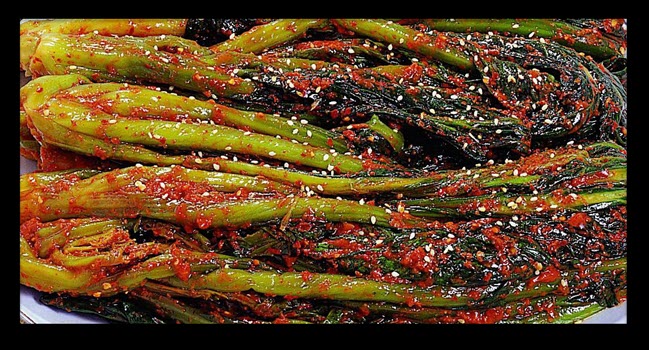
Gat Kimchi (Mustard Leaf Kimchi)
Gat Kimchi, another types of popular Kimchi that originates in South region of Jeolla Province. It is also called Mustard leaf Kimchi. Not only it is delicious meal, but a dish that loaded with Vitamins such as Vitamin C, A and Vitamin K.
It is made using its main ingredient which is mustard greens. Other ingredients includes glutinous rice and anchovy paste (fermented).
Red chili peppers is also used in making Gat Kimchi, therefore there’s hint of spiciness on the dish. Though adding salted anchovies can help lessen the bitterness taste of Gat Kimchi. Also, if you want to enhance its flavor adding onion leaves will do the trick.
Gat Kimchi is best paired with instant ramen noodles and can also be eaten together with Ganjang Gejang, or marinated crab on soy sauce.
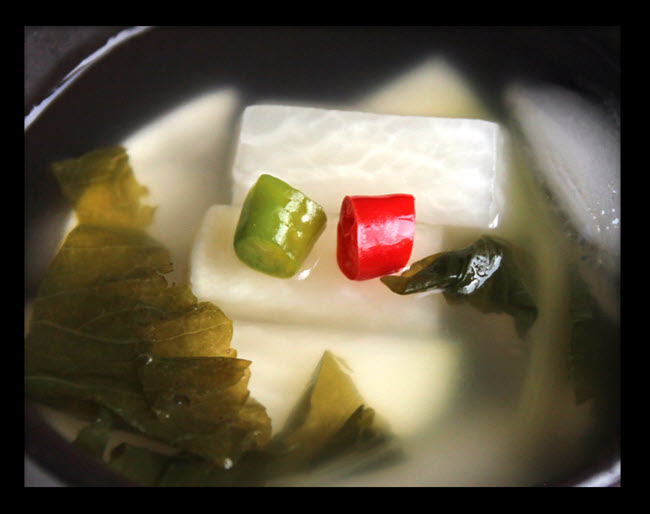
Dongchimi (Radish Water Kimchi)
Another watery Kimchi variety is Dongchimi Kimchi or also called Winter Kimchi. Dongchimi comes from the Korean word which means Winter Solstice.
Dongchimi Kimchi is made of Radish. The vegetables are slice into thinly square shaped slice mixed with green onion and either using green or red chili. The mixture are then soaked into a brine, which is made using ingredients such as garlic, Korean pears, ginger and apples.
It has a sweet taste with a hint of saltiness and tangy taste. It is best paired with cold noodles such as Naengmyon or Dongchimi Guksu.
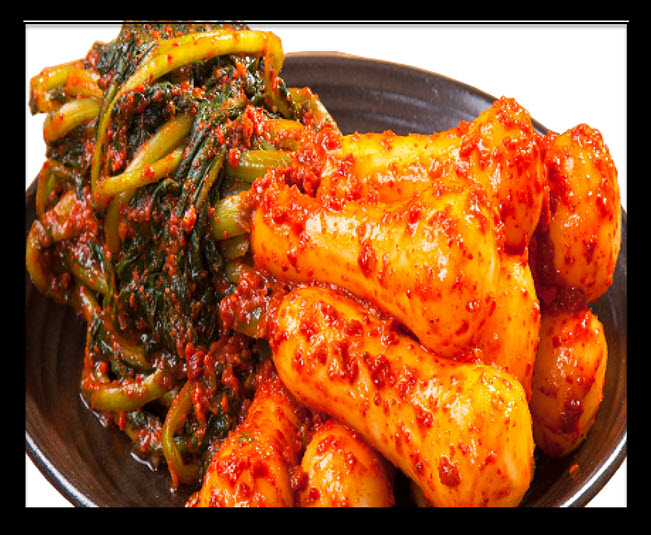
Chonggak Kimchi (Whole Radish Kimchi)
Last but not the least on our list is Chonggak kimchi. It is considered to be the most crunchy type of Kimchi amongst the rest of Kimchi variety.
Chonggak Mum, its main ingredients is a small variety of radish is used in making this type of Kimchi. It appears to have a leafy green stem that typically looks like a ponytail of some sort. That is why is also called Ponytail radish kimchi.
When preparing Chonggak kimchi, pickled young radish are used. Seasonings are then added to however the leaves and stems of the vegetable is not removed, but rather retained. Other ingredients includes Green onions, Flour paste and Anchovy liquid that are fermented.
Since Chonggak kimchi takes some time to make and involves longer period of fermentation, it is not usually available in Korean restaurants but rather in Korean Households.
Conclusion
In here we have gathered some of the common types of Kimchi and if you noticed Kimchi is not only limited to a single vegetable as an ingredients but rather a combination of different varieties of seasonings made for most of Korean Cuisine.
There are in fact more other types of Kimchi out there that depends on the regions or the season when it is made. If you want an even more vegan Kimchi, you can use soy sauce as an alternative to ingredients on some Kimchi that are fish based.
We hope that this guide has helped you understand and learn more about Kimchi and how each variety is being made. Have you already chosen which one you want to try and which Korean food is your favorite? Let us know what you think.

